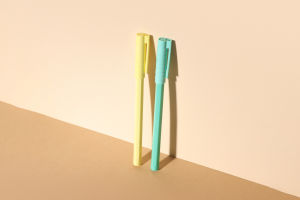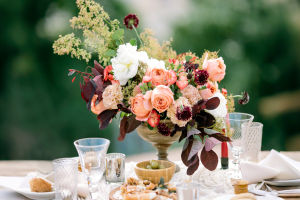Porcelain is renowned not just for its fine quality and durability, but for its exquisite decorative potential.
From delicate hand-painted floral motifs to intricate gold accents, porcelain's surface has long been a canvas for artistic expression.
The beauty and elegance of porcelain decorations transcend cultures and eras, making it one of the most sought-after mediums in art and craftsmanship. Here's how porcelain's rich decoration continues to captivate collectors and art lovers alike!
Hand-Painted Porcelain: The Timeless Craft
One of the most revered methods of decorating porcelain is hand-painting. Artists use fine brushes to apply vibrant colors directly onto the porcelain surface, creating intricate designs that bring each piece to life. These hand-painted designs often include natural elements like flowers, animals, and landscapes, as well as abstract patterns that add personality and flair to the porcelain. Each brushstroke is a work of art, transforming simple porcelain into an object of beauty.
Lustrous Metallic Finishes
Incorporating gold, platinum, or silver into porcelain decoration has been a hallmark of high-end craftsmanship for centuries. Modern porcelain artisans frequently use lustrous metallic finishes to enhance their pieces, whether through gilding or luster painting.
These metallic accents add dimension and a dazzling shimmer, making the piece stand out. Gold borders, platinum highlights, and even intricate gold leaf designs elevate porcelain’s appeal, creating a luxurious and timeless look.
Transfer Printing for Intricate Detail
While hand-painting offers uniqueness, transfer printing allows for consistent, detailed patterns on porcelain. This technique uses engraved copper plates to transfer designs onto porcelain pieces. The results are often intricate, with floral, geometric, or historical motifs printed in precise detail. Transfer printing allows for the mass production of decorative porcelain, ensuring that each piece retains its high level of sophistication and charm.
Contemporary Designs with Porcelain
Modern artists are pushing the boundaries of traditional porcelain decoration, incorporating contemporary designs and abstract themes. These designs may feature minimalist patterns, bold color schemes, and dynamic shapes, making porcelain not just an antique collector’s item, but a medium for modern art.
Porcelain is being used for everything from avant-garde sculptures to sleek dinnerware, where decoration takes a more minimalist or experimental approach while maintaining the material's elegance.
Floral Motifs: A Classic Appeal
Floral decorations have always been a staple of porcelain designs. Flowers like peonies, chrysanthemums, and roses are not just beautiful to look at but often carry symbolic meanings. For instance, the peony symbolizes prosperity in Chinese culture, while the lotus represents purity.
These floral decorations are skillfully applied to porcelain through hand-painting, adding softness and charm to the overall piece. Floral porcelain is a classic, whether it's seen on delicate teacups or large, statement vases.
Geometric and Abstract Porcelain
Porcelain decoration isn’t limited to nature-inspired designs. Geometric and abstract patterns have made their mark in modern porcelain artistry. These bold and often experimental designs focus on lines, shapes, and colors, creating a striking contrast with the traditional floral and realistic portrayals. Geometric porcelain decorations offer a fresh, contemporary take on this ancient material, often featured in modern home decor and upscale tableware.
Porcelain Figurines and Sculptures
Porcelain is also widely used to create figurines and sculptures, where decoration is applied in the form of intricate detailing. From animals to historical figures, porcelain sculptures often have rich decoration that highlights the fine details of the subject. These pieces can be painted by hand or have fine detailing added in the form of accessories or texture. Porcelain figurines are often displayed in homes as art pieces, where their rich decoration captures attention and sparks conversation.
Caring for Porcelain Decorations
To ensure that the rich decoration on porcelain remains intact, it’s important to handle these items with care. When cleaning porcelain, always use a soft cloth to avoid scratching the delicate surface. Mild soap and warm water are often enough to clean without damaging the decoration.
For porcelain with metallic or gold accents, avoid harsh cleaning products, as these could cause fading or tarnishing. Proper storage is also essential, as porcelain should be kept in a secure location to prevent chips or cracks that could damage the beautiful decoration.
Porcelain’s rich decoration is what truly makes each piece stand out. Whether it’s the delicacy of hand-painted floral designs, the luxury of metallic finishes, or the modern appeal of abstract art, porcelain continues to captivate with its beauty and craftsmanship. From collectors’ items to contemporary home decor, porcelain is a versatile and timeless material that will always remain a symbol of elegance and artistic brilliance!


